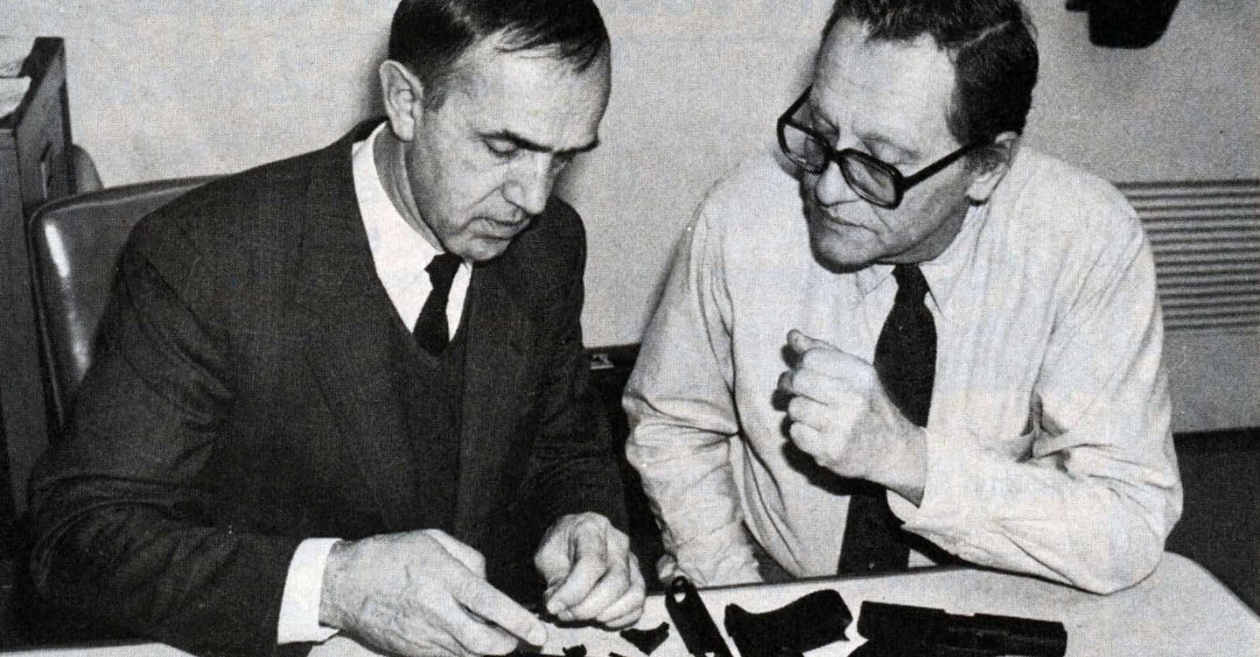


Gaston Glock, a name synonymous with innovation in the firearms industry, has left an indelible mark on the world of weaponry. Born on July 19, 1929, in Vienna, Austria, Gaston Glock's journey from a modest background to revolutionizing the gun industry is nothing short of remarkable. Before delving into the firearms realm, Gaston Glock initially made a name for himself in the business of curtain rods and knives. Little did the world know that this entrepreneurial spirit would soon pivot towards creating some of the most iconic firearms in history.
The turning point in Gaston Glock's career came in the early 1980s when the Austrian military announced its search for a new standard-issue sidearm. Glock, with no prior experience in firearm design, took on the challenge and introduced the Glock 17, a 9mm polymer-framed pistol. The use of polymer was groundbreaking, as it made the firearm lightweight, durable, and resistant to corrosion—a game-changer in the industry.
| Feature | Specification |
| Caliber | 9mm |
| Capacity | 17 rounds |
| Weight | 22.04 ounces (empty) |
| Frame Material | Polymer |
| Barrel Length | 4.49 inches |
The Glock 17's success in the Austrian military paved the way for its widespread adoption by law enforcement agencies worldwide. Its simple design, reliability, and reduced recoil made it a favorite among professionals. Today, Glock pistols are the sidearm of choice for law enforcement agencies in more than 50 countries.
Building on the success of the Glock 17, Gaston Glock expanded the product line to include various models catering to different needs. The Glock 19, Glock 26, and Glock 43 are just a few examples that have become staples in the firearms market, further solidifying Glock's presence in the industry.
| Model | Caliber | Capacity |
| Glock 19 | 9mm | 15 rounds |
| Glock 26 | 9mm | 10 rounds |
| Glock 43 | 9mm | 6 rounds |
Gaston Glock's firearms have not only found favor in military and law enforcement but have also become a staple in the world of competitive shooting. The Glock platform's reliability and ease of use have made it a preferred choice for professional and amateur shooters alike, dominating various shooting competitions globally.
Gaston Glock's influence extends beyond firearms. The Glock brand has diversified into other areas, including knives, apparel, and accessories. This diversification showcases Glock's commitment to innovation and adaptation to meet the evolving needs of its consumers.
Gaston Glock's impact on the firearms industry has earned him numerous accolades and awards. His contributions have been recognized globally, solidifying his place in history as an entrepreneur who reshaped the landscape of firearm design.
In conclusion, Gaston Glock's journey from an Austrian entrepreneur with no background in firearms to a revolutionary figure in the industry is a testament to his ingenuity and perseverance. The Glock pistols, with their polymer frames and innovative design, have become a symbol of reliability and efficiency. As we reflect on Gaston Glock's history, it's clear that his legacy will endure, leaving an indelible mark on the world of firearms for generations to come.
Gaston Glock is an Austrian entrepreneur born on July 19, 1929, known for revolutionizing the firearms industry. He gained prominence by introducing the Glock 17, a polymer-framed pistol, which transformed traditional firearm design and became widely adopted by military and law enforcement agencies globally.
The Glock 17 is notable for its use of polymer in its frame, making it lightweight, durable, and resistant to corrosion. This innovation was groundbreaking in the early 1980s, setting a new standard for firearm design and influencing the development of subsequent Glock models.
Glock pistols are the preferred sidearm for law enforcement agencies in over 50 countries. Their simplicity, reliability, and reduced recoil make them ideal for professionals. The Glock platform's success in military and law enforcement paved the way for its popularity among civilians and competitive shooters.
The Glock brand has diversified into various areas beyond firearms, including knives, apparel, and accessories. This diversification showcases Glock's commitment to innovation and meeting the evolving needs of its diverse consumer base.
Gaston Glock's legacy is marked by his contributions to firearm design and innovation. His impact has earned him numerous accolades and awards, solidifying his place as a key figure in the history of firearms. Glock's influence extends beyond the industry, leaving an enduring mark on competitive shooting and the broader world of weaponry.

South Korea is like a cool mix of old

You might not think of Luton immediat

Cancun, just saying it makes you thin

The USS Enterprise is like a supersta

Woolworths, a beacon in the retail la

In the vast sea of credit card choice
Trash to treasure: How Google thinks
Spring Fashion Show at the University
Matter of Impact: April updates from
Android Enterprise security delivers
We are not gonna make spamming
Copyright By@TheWebTrends - 2023
BACK TO TOP